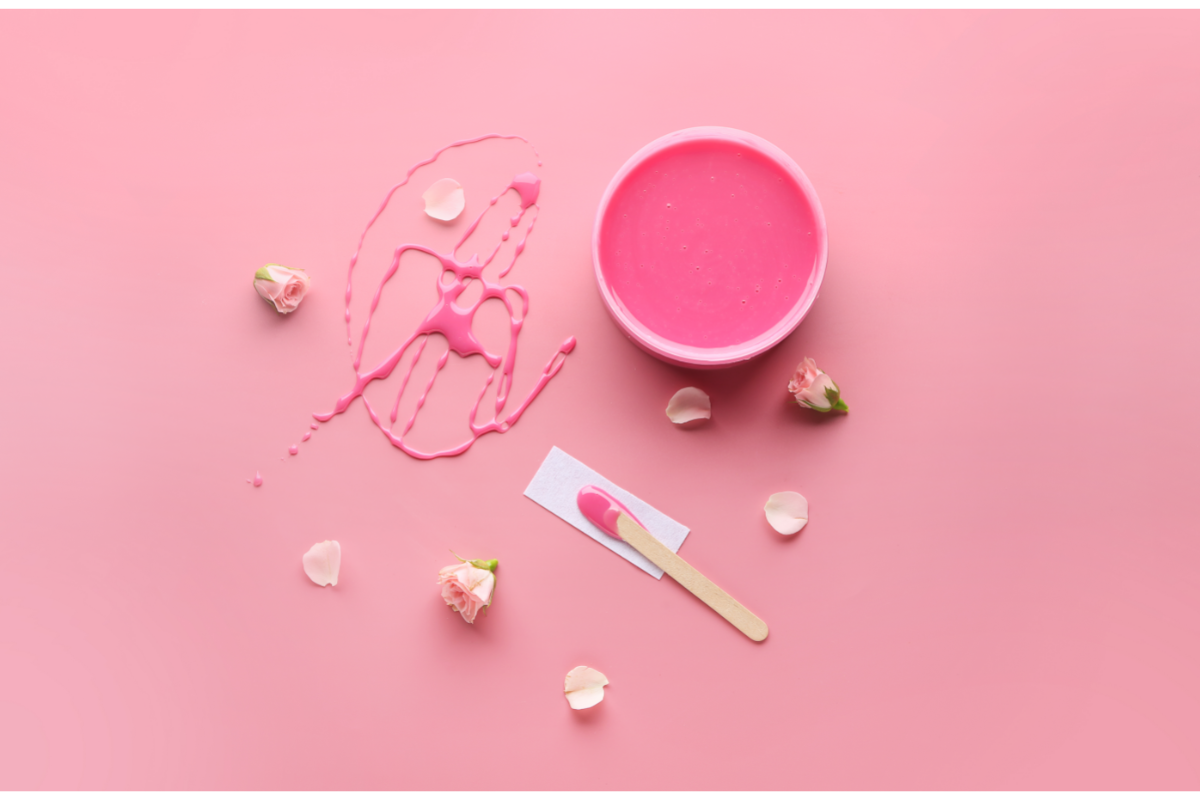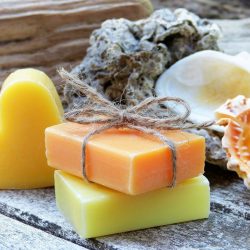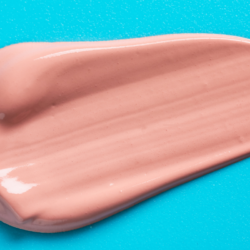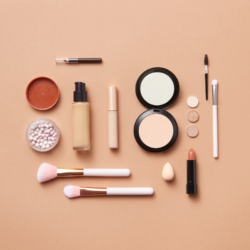Hair removal is a subject that concerns more and more women these days. While some opt to keep hair on their bodies, others want smooth, perfectly waxed legs so they can make the most of sunny days and light summer outfits. However, hair removal can be a tedious process, requiring meticulous preparation to avoid irritation and pain. So before you start applying moisturisers or tanning, it’s crucial to prepare your skin properly by getting rid of any unsightly hairs that can detract from your elegant appearance.
What is natural hair removal?
Natural hair removal is a hair removal method that favours the use of all-natural products, often derived from traditional recipes. This approach differs from conventional methods in its emphasis on gentleness, fewer chemicals and harmony with the environment. It encompasses a range of techniques, from the use of waxes based on natural ingredients to more ancient, traditional methods.
Traditional methods
Historically, traditional methods of natural hair removal have been passed down from generation to generation, adapted to local cultures and availability of ingredients. One of the best-known methods is sugar-lemon wax, also known as “oriental wax” or “halawa”, which is widely used in the Middle East. This method involves using a mixture of sugar, water and lemon, sometimes with other ingredients such as honey, to create a sticky paste which, once applied and removed, takes the hair with it. Other cultures use mixtures based on flour or other natural substances with depilatory properties.
Advantages of natural hair removal
Natural hair removal has several notable advantages. Firstly, it is generally gentler on the skin than chemical or mechanical methods. The risks of irritation, redness and allergic reactions are considerably reduced, which is particularly beneficial for sensitive skin. What’s more, the natural ingredients used, such as sugar and lemon, can have exfoliating and moisturising properties, leaving the skin not only smooth but also nourished. Environmentally, natural hair removal is a more sustainable and eco-friendly method, as it avoids the harmful chemicals and plastic waste associated with disposable razors and wax strips. Finally, this technique can be economical, as many of these preparations can be made at home with common, affordable ingredients.
Risk-free waxing
Having smooth, perfectly waxed skin is a necessity for many women. However, using a razor is often associated with complications such as cuts, redness and ingrown hairs. Fortunately, there are now safer, natural alternatives for hair removal, both for preparation and skin maintenance.
Natural hair removal routines are becoming increasingly popular, as they allow you to look after your skin without risking your health. Use natural ingredients such as brown sugar, honey and vegetable oil to gently exfoliate your skin before waxing. This preparatory step will make hair removal less painful and quicker. A clearer, finer epidermis prevents ingrown hairs and makes it easier to remove the hair.
Committed cosmetics brands also offer natural products for hair removal, free from chemicals that are harmful to the skin. Ingredients such as sweet almond, glycyrrhetinic acid and liquorice extract are often used in the formulation of these natural hair removal products. They offer safe and effective hair removal, specially designed for sensitive areas such as the face and bikini line.
It’s important to choose the depilatory product best suited to your skin type and the area to be depilated to avoid irritation and skin reactions. Natural, gentle products are the most recommended for epilating sensitive areas, as they minimise the risk of irritation and redness.
How should I prepare my skin before waxing?
For successful natural hair removal, skin preparation is a crucial step. Proper preparation helps to make hair removal more effective and minimise skin irritation. This preparation mainly involves cleansing and exfoliating the skin.
Cleansing the skin
Before applying any hair removal product, it is essential to thoroughly cleanse the skin. Use lukewarm water to open the pores and facilitate hair extraction. Gentle cleansing with a mild soap or alcohol-free body cleanser is recommended to remove traces of sweat, dirt and cosmetics. After cleansing, gently pat the skin dry with a clean towel to avoid any irritation. This step ensures that the wax or other depilatory product adheres properly to the hair and not to dirt or skin residue.
Exfoliation
Before waxing, it is essential to gently exfoliate the skin to prepare it for waxing. Exfoliating the epidermis removes dead cells and impurities that can clog pores. These are the main causes of ingrown hairs! What’s more, a cleaner, finer epidermis will make hair removal less painful and quicker.
To achieve effective home exfoliation, you can use simple, natural ingredients that are readily available in the kitchen. The most popular recipe is brown sugar mixed with honey and vegetable oil. The brown sugar acts as a gentle exfoliant, the honey has antibacterial and skin-soothing properties, and the vegetable oil nourishes and moisturises the skin.
It’s important to massage the mixture gently into the skin using circular movements to stimulate blood circulation and help eliminate impurities. This step should be carried out before waxing to avoid irritation and redness.
Natural, safe and effective hair removal
If you want to use natural products, there’s nothing better than making your own homemade mixture. The caramel-sugar-honey-lemon juice mixture is a well-known recipe in the field. This recipe offers a natural, gentle alternative for removing hair. It’s easy to make and contains no chemicals that are harmful to the skin.
However, if you don’t have the time or are not a fan of homemade preparations, there are also natural and healthy hair removal products on the market. Committed cosmetics brands offer chemical-free products specially designed for gentle, skin-friendly hair removal.
For sensitive areas such as the face, it’s important to choose a product specifically designed for this purpose. Hair removal products often use natural ingredients such as sweet almond, glycyrrhetinic acid and liquorice extract to minimise the risk of irritation and skin reactions.
Which products to use
Netline Cold Depilatory Wax for Face and Sensitive Areas contains 20 Strips for fast, safe depilation of the face. It contains no parabens or petroleum-based products. In fact, this cold depilatory wax is made from natural beeswax and Calendula. We’ve specifically chosen these ingredients to minimise irritation during depilatory waxing. The kit contains an after-waxing treatment with aloe vera to soften the skin and remove wax residue.
If you’re a bit of a creature comforter, opt for Klorane’s depilatory cream for sensitive areas. In fact, it’s a depilatory cream formulated with sweet almond, glycyrrhetinic acid and liquorice extract. Its formula perfectly removes hair from the face and sensitive areas such as the bikini line and underarms. Coat the hair by spreading the cream in a thick, even layer using a spatula. Leave on for 4 to 5 minutes. Finally, remove the cream with the sharp edge of the spatula before rinsing with warm or cold water.
What post-waxing care should I use?
After a hair removal session, whether natural or not, it’s crucial to take care of your skin to minimise irritation and promote rapid healing. Post-depilation care mainly involves moisturising and soothing the skin.
Moisturising
Moisturising is essential after hair removal to restore the skin’s natural barrier, which may be slightly damaged by the hair removal process. Use an alcohol-free, fragrance-free moisturising cream or lotion to reduce the risk of irritation. Products containing aloe vera, calendula oil or jojoba oil are particularly beneficial because of their soothing and regenerative properties. Apply the moisturiser generously to the depilated area, massaging gently to encourage absorption and blood circulation. This step will help maintain skin elasticity and prevent dryness and itching.
Soothing the skin
Soothing the skin is another important step in post-waxing care, especially if the skin is red or irritated. Natural products such as aloe vera gel, rose water or lavender essential oil (diluted in a carrier oil) can be very effective in soothing the skin. Apply these products gently to the affected areas to reduce inflammation and provide immediate relief. Avoid exposure to the sun immediately after waxing and wear loose-fitting clothing to avoid rubbing against freshly waxed skin. If the skin is particularly sensitive, using a cold compress or a cooled tea bag (such as green tea or chamomile) can also help reduce redness and swelling.
This post-waxing care is essential to maintain the skin’s health and softness, while preventing complications such as ingrown hairs or infections.
The health professional’s opinion
Natural hair removal is an interesting option for people concerned about their health and well-being. The natural products used for hair removal are often free of chemicals. As a result, they are less likely to cause skin reactions or irritation.
However, it is important to note that natural hair removal may not be suitable for all skin or hair types. Some people may be more sensitive and react negatively to certain natural ingredients. It is therefore advisable to carry out a preliminary test on a small area of skin.
As a healthcare professional, I also recommend that you don’t overlook the importance of hygiene when depilating, by using clean products and following the instructions for use. In the event of complications such as infections or persistent pain, it is important to consult a healthcare professional for appropriate treatment.
FAQ :
Q : Is hair removal painful? A: Exfoliating the skin before hair removal makes the operation less painful.
Q : Are natural products effective for hair removal? A: Yes, natural products can be very effective for hair removal and are often safer than chemical products.
Q: How can I avoid ingrown hairs? R: It’s important to exfoliate the skin beforehand and use a suitable product to avoid ingrown hairs. It’s also important not to remove hair from irritated areas of the skin.
Q: How should I look after my skin after waxing? R : It’s important to use a soothing aloe vera-based gel or a gentle moisturiser to avoid irritation and redness. Do not wear tight clothing immediately after waxing.







